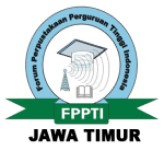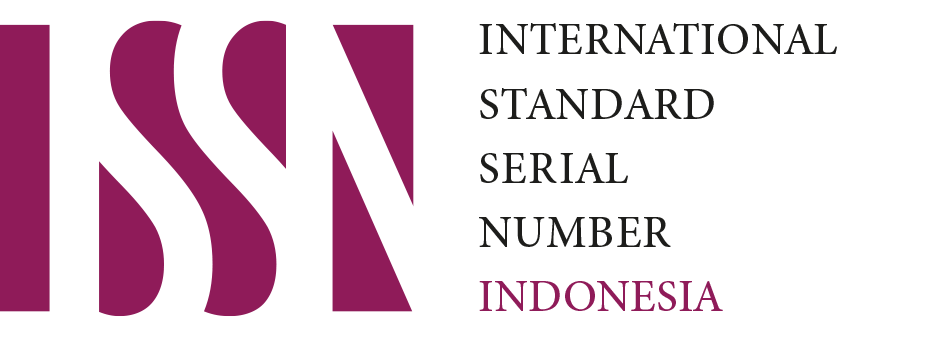Research Dissemination of Indonesian Institute of Sciences (LIPI) 2017-2020:
A Bibliometric Profile
Downloads
Background of the study: Dissemination of the research results of the Indonesian Institute of Sciences (LIPI) in 2017-2020 as measured by the distribution of publications.
Purpose: This study aims to determine the bibliometric profile of research results documents owned by the Indonesian Institute of Sciences (LIPI) for 2017-2020 which have been disseminated.
Method: The research method used is a quantitative bibliometric method with descriptive statistical analysis, and co-authorship analysis and co-occurrence analysis with VosViewer software.
Findings: There are three groups of findings: document distribution, research collaboration, and research trends, it is known that: (1) research documents on Scopus excel in large number, wide scope of various publications, and description about publication status and types of document access; (2) research documents on DOAJ excel in the scope of Indonesian local publications; (3) LIPI's researcher with the most research results is Sumowodagdo S.; (4) LIPI's research collaboration is consistent with the University of Indonesia and the National University of Singapore; (5) LIPI's research trends are consistent in Indonesian studies with Indonesia as the keywords.
Conclusion: The domination of the largest number of LIPI's research documents, collaboration, and keyword is found in research results indexed by the Scopus. Increased research can be done on a list of keywords that appear less frequently. Countries and institutions that have little collaboration also need attention and increase their collaboration. Countries and institutions with frequent collaboration also need to be maintained.
Downloads
Abraham, J., Irawan, D. E., & Dalimunthe, S. (2019). Jalan Evolusi Bibliometrik Indonesia. The Conversation. Retrieved July 25, 2021, from https://theconversation.com/jalan-evolusi-bibliometrik-indonesia-104781
Barjak, F. (2006). The Role of the Internet in Informal Scholarly Communication. Journal of the American Society for Information Science and Technology, 57(10), 1350–1367. DOI:10.1002/asi.20454
Donthu, N., et al. (2021). How to conduct a bibliometric analysis : An overview and guidelines. Journal of Business Research, 133(May), 285–296. DOI:10.1016/j.jbusres.2021.04.070
Eito-Brun, R., & Rodríguez, M. L. (2016). 50 years of space research in Europe: a bibliometric profile of the European Space Agency (ESA). Scientometrics, 109(1), 551–576. DOI:10.1007/s11192-016-2053-8
Hamdi, A. S., & Bahruddin, E. (2014). Metode Penelitian Kuantitatif Aplikasi dalam Pendidikan. Yogyakarta: Deepublish.
Irawan, D. E., Abraham, J., Multazam, M. T., Rachmi, C. N., Mulyaningsih, I., Viridi, S., ... Puradimaja, D. J. (2018). Era baru publikasi di Indonesia: status jurnal open access di Directory of Open Access Journal (DOAJ). Berkala Ilmu Perpustakaan Dan Informasi, 14(2). DOI:10.22146/bip.32920
Kriyantono, R. (2014). Teknik Praktis Riset Komunikasi. Jakarta: Kencana.
Lembaga Ilmu Pengetahuan Indonesia. (2021). Visi dan Misi. Retrieved from http://lipi.go.id/tentang/visimisi
Lukman, et al. (2019). Pengukuran Kinerja Riset: Teori dan Implementasi. Jakarta: LIPI Press. Retrieved from http://penerbit.lipi.go.id/data/naskah1562653683.pdf
Martin, M. W., & Ackoff, R. L. (1963). The Dissemination and Use of Recorded Scientific Information. Management Science, 9(2), 322–336. DOI:doi.org/10.1287/mnsc.9.2.322
Omasta, M. (2019). Research for Impact: Audience, Method, and Dissemination. Performance Matters, 5(2), 156–162.
Pattah, S. H. (2013). Pemanfaatan Kajian Bibliometrika Sebagai Metode Evaluasi dan Kajian dalam Ilmu Perpustakaan dan Informasi. Khizanah Al-Hikmah: Jurnal Ilmu Perpustakaan, Informasi, Dan Kearsipan, 1(1), 47–57. Retrieved from http://journal.uin-alauddin.ac.id/index.php/khizanah-al-hikmah/article/view/25
Royani, Y., Bachtar, M.A, Tambuan, K., Tupan & Sugiharto. (2013) Pemetaan Karya Tulis Ilmiah LPNKk: Studi Kasus LIPI DAN BPPT (2004-2008). BACA: Jurnal Dokumentasi dan Informasi, [S.l.], 34(1).
Taşkın, Z., & Aydinoglu, A. U. (2015). Collaborative interdisciplinary astrobiology research: a bibliometric study of the NASA Astrobiology Institute. Scientometrics, 103(3), 1003–1022. DOI:doi.org/10.1007/s11192-015-1576-8
Tupan. (2013). Kajian Sebaran Karya Ilmiah Peneliti LIPI yang diindek oleh Database Scopus. Visi Pustaka, 15(3), 133–140. Retrieved from http://digilib.mercubuana.ac.id/manager/t!@file_artikel_abstrak/Isi_Artikel_808267988747.pdf
Tupan, & Nashihuddin, W. (2016). Analisis Publikasi Ilmiah Peneliti LIPI yang Terindeks di Scopus: Studi Bibliometrik dengan Vosviewer. In Tupan, et al. (Eds.), Lokakarya Nasional Dokumentasi dan Informasi: Pengelolaan Data, Informasi, dan Pengetahuan untuk Mendukung Pembangunan Repositori Nasional. Jakarta: Pusat Dokumentasi dan Informasi Ilmiah Lembaga Ilmu Pengetahuan Indonesia.
Unaradjan, D. D. (2019). Metode Penelitian Kuantitatif. Jakarta: Penerbit Universitas Katolik Indonesia Atma Jaya.
van Eck, N. J., & Waltman, L. (2021). VOSviewer Manual: Manual for VOSviewer version 1.6.17. Leiden: Univeristeit Leiden. Retrieved from http://www.vosviewer.com/documentation/Manual_VOSviewer_1.6.1.pdf
Walidjo. (2020). Teknik Dokumentasi. In D. Fatihudin & I. Holisin (Eds.), Kapita Selekta Metode Penelitian (p. 128). Pasuruan: Penerbit Qiara Media.
Copyright (c) 2023 Ayu Muntiah, Athanasia Octaviani Puspita Dewi

This work is licensed under a Creative Commons Attribution-ShareAlike 4.0 International License.
Record and Library Journal by Unair is licensed under a Creative Commons Attribution-ShareAlike 4.0 International License.
1. The journal allows the author to hold the copyright of the article without restrictions.
2. The journal allows the author(s) to retain publishing rights without restrictions
3. The legal formal aspect of journal publication accessibility refers to Creative Commons Attribution Share-Alike (CC BY-SA).
4. The Creative Commons Attribution Share-Alike (CC BY-SA) license allows re-distribution and re-use of a licensed work on the conditions that the creator is appropriately credited and that any derivative work is made available under "the same, similar or a compatible license”. Other than the conditions mentioned above, the editorial board is not responsible for copyright violation.



 57201398420
57201398420

























